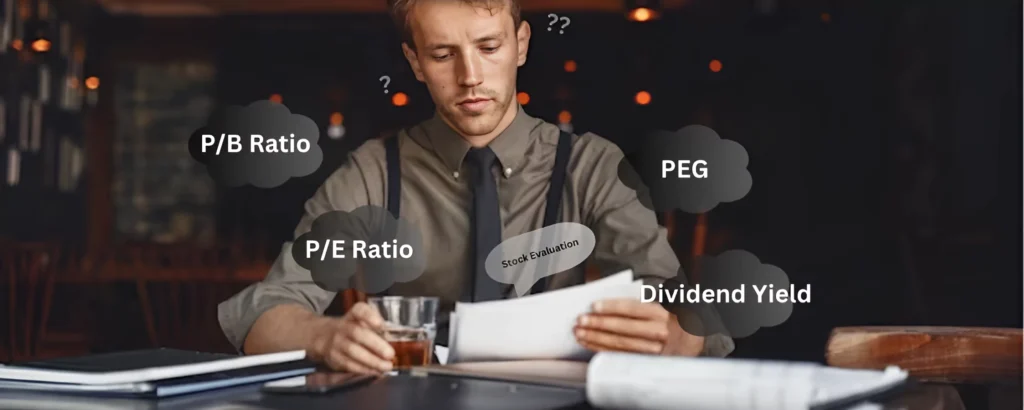An important component of investment is stock valuation. If you find a stock is undervalued, you might be able to profit by purchasing it with the hope of later selling it at a higher price. If it appears that a stock is overpriced, you can avoid it or sell your present holdings before the price falls.
This makes stock valuation important to know if you are considering to invest in the stock market. This article will take you through the four basic principles that investors use to evaluate a stock, how to use them, and some other methods investors use.
What is Stock Valuation?
stock valuation is the process of determining the value of a company’s shares using techniques that take economic considerations such as previous pricing and projected data into account. You may use this to forecast future market prices.
It takes careful examination to detail if you want to evaluate stocks. You must look at the cash flow of the business, the likelihood of future earnings, and the asset market value to evaluate a stock. The emotional factors that may influence investor behavior, such as worries about an upcoming economic disaster, should also be taken into account.
What Are The Types of Stock Valuation?
When discussing stock valuation we can divide it into two sectors, absolute and relative.
The Absolute Approach in Stock Valuation
The fundamental study of a company serves as the foundation for the absolute approach to stock valuation. It relies value on a range of financial data gathered from financial statements, putting a particular emphasis on variables like cash flow, dividend, and growth rate.
The dividend discount model (DDM), discounted cash flow model (DCF), residual income model (RIM), and asset-based model are all used in the absolute approach to determine the worth of stock. As the name implies, the absolute technique doesn’t evaluate the success of the business concerning its competitors.
The Relative Approach in Stock Valuation
The relative valuation technique includes defining the same measures for the business under consideration by comparing the major financial ratios of comparable businesses. Analyzing similar companies is the common method.
The core of this approach is the P/E ratio calculation. For instance, if the present company’s P/E ratio is lower than that of its competitors, then its stocks are cheap.
How to Valuate a Stock

To learn how to evaluate a stock we will learn the four most used financial ratios: price-to-book (P/B) ratio, price-to-earnings (P/E) ratio, price-to-earnings growth (PEG) ratio, and dividend yield.
What is the Price-to-Book Ratio (P/B)?
The price-to-book (P/B) ratio shows how much the business would be worth if it were ripped apart and sold right now. This is important to know given that many businesses in established sectors struggle with development, their assets nevertheless make them a smart investment. The book value frequently includes machinery, buildings, property, and anything else that may be sold, like stocks and bonds.
The book value of businesses that are exclusively financial may move along with the market since these stocks usually have an asset portfolio with shifting prices. Industrial businesses often rely their book value more on tangible assets, which under accounting standards, decline over time. If your low P/B ratio is reliable, it can protect you in any situation. This suggests that a potential buyer needs to find out more information about the underlying assets that make up the ratio.
What is the Price-to-Earnings Ratio (P/E)?
Among all the financial ratios, the price-to-earnings (P/E) ratio may receive the greatest attention. When there are sudden increases in the price of a stock, then the P/E ratio is the main aspect for it to continue or not. Even while a stock’s value could increase even in the absence of significant earnings growth, its capacity to do so depends on its P/E ratio. If there are no earnings to maintain the price, a stock will eventually fall back in cost. P/E ratios should only be compared between companies in comparable markets and industries, it is essential to remember this.
Simple logic explains why this is the case: A P/E ratio may be thought of as the time it will take for a stock to make back your investment, assuming no changes are made to the business. If a stock trades for $40 per share and earns $4 per share, it has a P/E ratio of 10, which is commonly interpreted as implying that, barring any changes, you’ll recover your investment in 10 years.
Investors attempt to forecast which businesses will see increasingly bigger earnings, which is why shares typically have high P/E ratios. If a business has a P/E ratio of 30, an investor could purchase it if they believe its earnings would double annually, cutting the payout time substantially. If this doesn’t happen, the stock will decline back to a more reasonable P/E ratio. The business will presumably continue trading at a high P/E ratio if it is successful in increasing earnings.
Price-to-Earnings Growth Ratio (PEG)
Investors typically utilize the price-to-earnings growth (PEG) ratio since the P/E ratio is not enough on its own. The PEG ratio takes into account the past rate of growth of the business’s earnings in addition to price and earnings. This ratio also illustrates how the stock of a certain business compares to that of another. The PEG ratio is obtained by dividing a company’s P/E ratio by the earnings growth rate over the previous year. You are receiving a better deal for the stock’s projected future profits if your PEG ratio is lower.
By applying the PEG to compare two stocks, you may find out how much you pay for growth in each scenario. A PEG of 1 indicates that, if growth remains as it has in the past, you will break even. A PEG of 2 suggests that you are paying twice the amount than a PEG of 1 for anticipated growth. Since there is no assurance that growth will keep going as it has in the past, it can be risky and unpredictable.
The PEG ratio is a graph showing where a business has been, whereas the P/E ratio is an illustration of where it is right now. After acquiring this information, an investor must decide if it is likely to move in that direction.
Dividend Yield
It’s usually smart to have a backup when a stock’s growth slows down. This is the reason dividend-paying stocks are appealing to many investors since you still receive a payout even when stock values fall. The dividend yield shows how much of an investment return you are getting. The annual dividend of the stock divided by the stock’s price will give you a percentage you can use. That proportion may be compared to the return on your savings, with the added potential for an increase due to stock gain.
The dividend yield has a few things you should check even if it appears straightforward on paper. Due to irregular dividend payments or suspensions in the past, the dividend yield cannot be depended upon completely. Knowing what direction the market is going can be crucial when deciding whether to purchase or not, as dividends may fluctuate over time. The amount of dividends paid also varies by industry, with some banks and utilities frequently giving out sizable sums while tech businesses, which may reinvest virtually all of their profits back into the company to promote development, generally pay out very little to no dividends.
What Are Value Traps?
When investors are evaluating a stock they frequently bear the danger of selecting stocks with low P/E ratios. This may be the result of inherent business factors, such as poor fundamentals and a worsening business environment. When a company’s P/E ratio seems suspiciously low, investors should be careful not to fall into a value trap and investigate the company’s fundamentals.
Conclusion | How to Valuate a Stock
Dividend yield and the P/E, P/B, PEG, and PEG ratios are too specific to be used as a stand-alone indication of a company. Combining valuation methods might help you comprehend a stock’s value better. Any of these, as well as more complex ratios like cash flow, may be impacted by creative accounting.
The more instruments you apply in your valuation methods, the easier it is to spot differences. Even if thousands of unique metrics overlook them, these four fundamental ratios will always be useful beginning points for figuring out whether a business is profitable to acquire or not.













